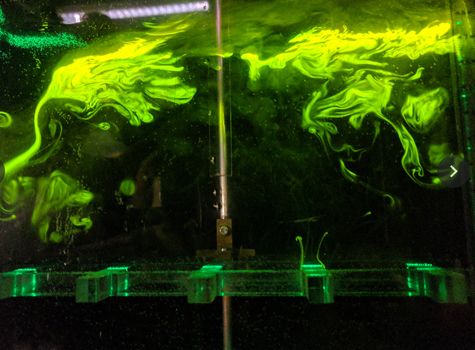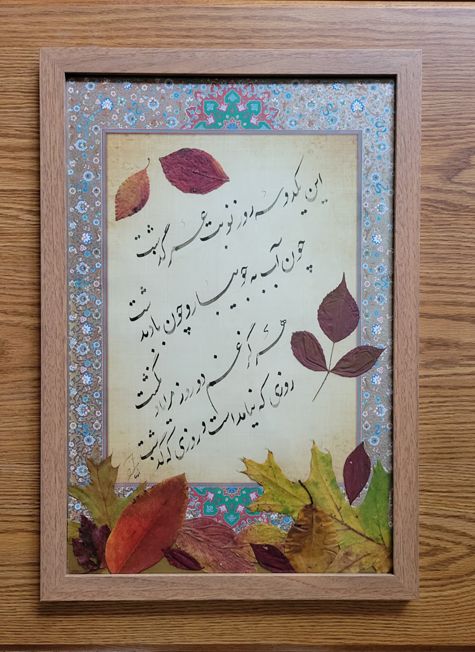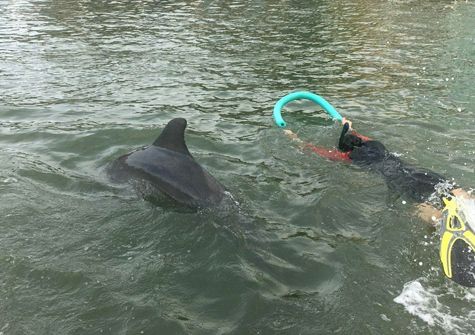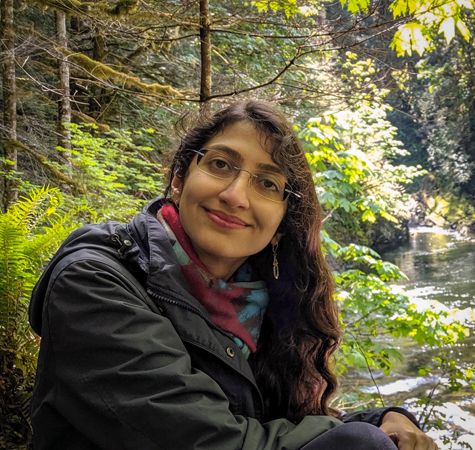Early Career Scientist Spotlight
Dr. Atousa Saberi (she/her/hers)
Oceanographer
Global Modeling and Assimilation Office (610.1)
What motivated you to pursue a career in physical oceanography?
I usually allow my curiosity to lead the way. That is how I ended up meandering through several different majors. During my childhood, I was into art and crafts, and I thought I would grow up to be an artist owning an art studio. But mathematics and engineering attracted me so much that art became secondary for a while. Pursuing mechanical engineering for my Bachelor’s and learning about turbomachinery, my interest for rotating fluid mechanics grew and I ended up studying the Earth’s oceans. I worked on hurricane storm surge modeling during my Master’s and I learned about Lagrangian particle tracking technique. The Lagrangian technique is the most natural way of describing fluid motion, by tagging a fluid parcel and chasing it in time and space. Although the Lagrangian point of view is very intuitive, it is hard to do in practice in comparison to the field view of fluid motion (known as Eulerian). Thinking about these concepts, brought me to the field of physical oceanography for my Ph.D.

Credit: Atousa Saberi
What science questions do you investigate?
My research is focused on developing a greater understanding of the flow passing over topographic features. The Earth’s oceans are partitioned by submarine ridges into large basins that are often connected by deep passages. The questions I investigated during my Ph.D. were related to the kinematics and dynamics of overflows in the two deep passages along the Greenland-Scotland Ridge specifically. These research questions included:
- What are the origins and pathways of the dense overflows at these passages?
- How do the properties of water evolve along its path?
- How do the Lagrangian particles (both the real floaters and simulated particles) improve our understanding of the circulation?
- The volume flux through deep ocean passages is hydraulically controlled. How can we take advantage of this property to design optimum monitoring strategies with limited instrumentation?
What was your first big research achievement?
During my Ph.D. at Johns Hopkins University, we used a circulation model to map the trajectories and properties of water during the overflow process. The overflow, in general terms, is the process of flow passing over topographic features and can be classified based on the density structure of the water column. We found a new pathway of dense overflow at the Denmark Strait, which was not known before. Our collaborators were able to show its existence through observation-based analysis. This is important, because finding a new pathway near a deep passage can help us understand potential variabilities in the composition of deep water. You can read more about this work and watch a supplementary video of simulated Lagrangian particles overflowing the Denmark Strait.
What skills are most useful to you in your work, and where did you develop those skills?
Aside from technical skills, I think scientific skepticism, independent thinking, and understanding the research questions at hand have been the most important tools for my success. Having scientific skepticism and being evidence-driven gives me a sturdy ground on which to place the building blocks of my thinking during research. Truly understanding a science question is also a big part of the process. If I can break down a science question into detailed components, I can take more targeted steps toward tackling it. Take the example of the science question I worked on during my Ph.D.: What are the origins of overflow pathways? I spent a lot of time thinking about what origin and overflow mean in the context of my research. For a while, I took a deep dive in the literature to see how these words are defined. The rethinking of what others have done helped me in discovering something new.
Who inspires you?
I am inspired by many people, especially mentors in high school and undergrad. But, among people with world-wide recognition, I am most inspired by the following: Omar Khayyam, the Persian mathematician, astronomer, philosopher and poet of 12th century inspired me to follow my passion for both my art and science interests, simultaneously. Neil deGrasse Tyson’s enthusiasm for science and clarity in speech inspire me to become a better communicator when it comes to casual science discussions with the public or with colleagues. Maryam Mirzakhani, the first woman to ever win the Fields Medal in mathematics, inspires me to take a more positive approach towards a research question. This quote from her always lives in my thoughts: “…it is like being lost in a jungle and trying to use all the knowledge that you can gather to come up with some new tricks, and with some luck, you might find a way out”.
What do you like to do in your free time?
Most of my free time is spent playing and caring for my toddler and walking on trails with my partner or friends. My favorite hobby is calligraphy. When I create quality calligraphy work, I participate in local and international galleries and exhibitions. I also enjoy outdoor swimming and gardening in the summer.

“Our lifetime is passing like a count to three,
Like water in rapids and wind in the tree.
I won’t be worried about two occasions:
What has been and whatever will be!”
Credit: Atousa Saberi
If you were to expand your current research focus, what new topics would you explore?
I once taught a course on the topic of natural hazards and it made me excited to learn just about anything, from earthquakes to hydrology, to food security, to epidemiology! I love to talk and collaborate with researchers who investigate these topics and I love to branch out to different areas. I’d like to get more hands-on experience and participate in lab or field experiments. For example, I’d love to participate in an ocean-observing mission on a research vessel, help design an experiment, or work with some of the sensors installed on satellites for remote sensing of ocean surface properties.

Credit: Atousa Saberi
What advice would you give your younger self?
Try to dig deep inside yourself and see what you like doing the most. It may not exist in the real-world, but you’re free to carve the path you’re interested in pursuing.

Credit: Atousa Saberi
Biography
Home Town:
Esfahan, Iran
Undergraduate Degree:
B.Sc. in Mechanical Engineering, Isfahan University of Technology
Post-graduate Degrees:
M.Sc in Ocean Engineering, Florida Institute of Technology
Ph.D in Earth and Planetary Sciences, Johns Hopkins University

